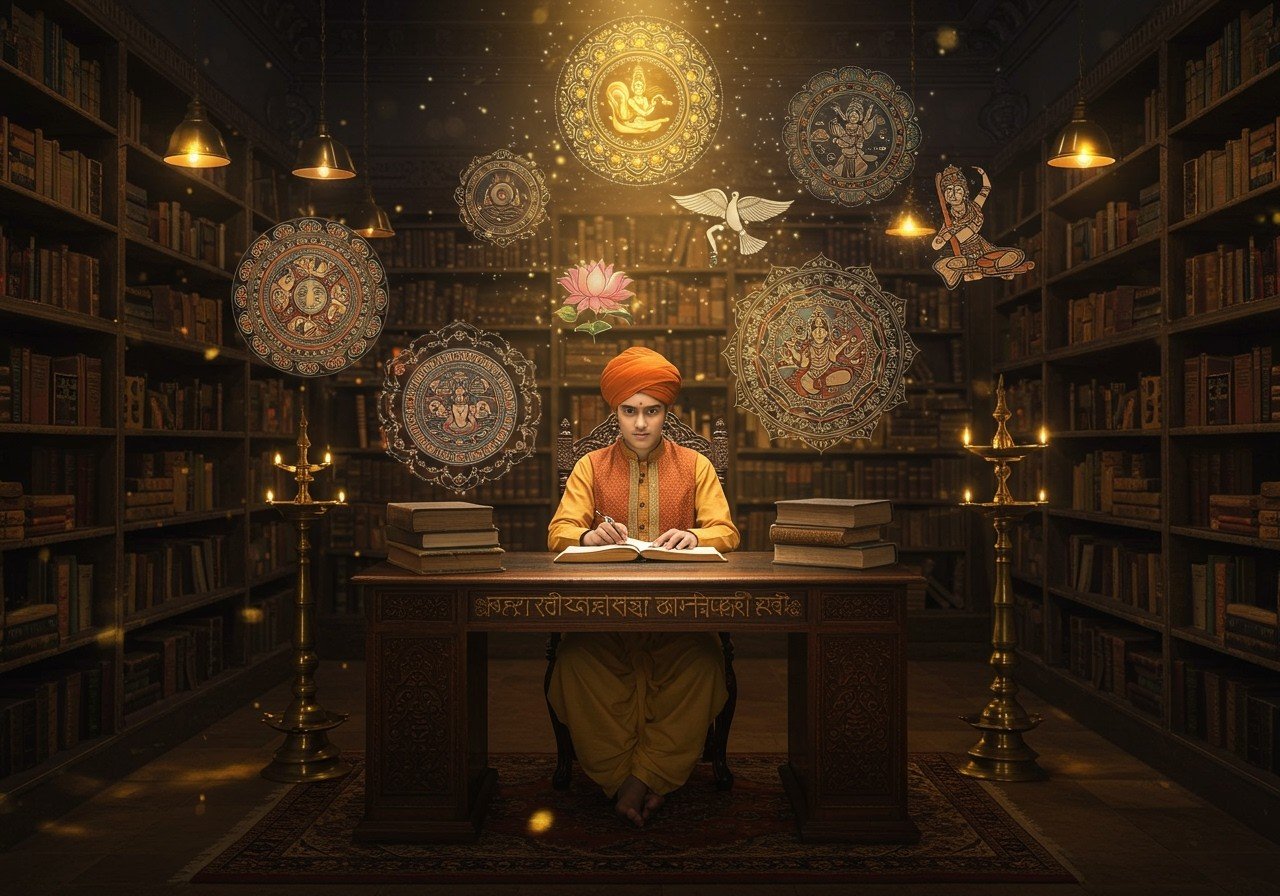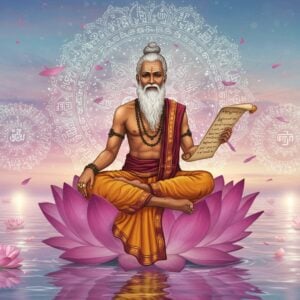
Figures of speech, known as “Alankar” (अलंकार) in Hindi, enhance the beauty and impact of language. Much like ornaments adorn a person, Alankar adds stylistic flair to writing and speech. Alankar is broadly classified into two main categories: Shabdalankar (शब्दालंकार), which relies on specific words for ornamental effect, and Arthalankar (अर्थालंकार), which relies on the meaning of words.
Exploring Artha Alankar (अर्थालंकार)
Artha Alankar, the figures of speech based on meaning, adds depth and artistry to Hindi literature. These expressive devices enrich poetry and prose, resonating with those who value tradition and linguistic richness. Let’s delve into some common types:
Upma (उपमा) – Simile
Upma draws parallels between two distinct concepts, highlighting their shared qualities using words like ‘jaisa’ (like) or ‘samaan’ (as). For instance, “Mukh chand jaisa sundar hai” (A face as beautiful as the moon) evokes a vivid image through comparison.
Rupak (रूपक) – Metaphor
Rupak creates a direct association between two different things, without using explicit comparison words. “Jeevan ek safar hai” (Life is a journey) illustrates this, inviting contemplation on life’s exploratory nature. You can find items related to rituals and ceremonies at poojn.in.
Anupras (अनुप्रास) – Alliteration
Anupras uses the repetition of consonant sounds to create a rhythmic and musical effect. “Chanchal chapal chameli” demonstrates this, with the repeated ‘ch’ sound adding a playful lilt. Premium quality Dhoop and other pooja samagri are available at Poojn.in.
Shlesh (श्लेष) – Pun
Shlesh plays on words with multiple meanings, often for humor or to create double entendre. “Sajna hai mujhe sajna ke liye” exemplifies this, with ‘sajna’ meaning both ‘to adorn’ and ‘lover’. Explore a wide range of spiritual products at Poojn.in.
Atishyokti (अतिशयोक्ति) – Hyperbole
Atishyokti employs exaggeration for emphasis or dramatic effect. “Uske rone se sara samandar bhar gaya” (His crying filled the entire ocean) showcases this, amplifying sorrow for emotional impact.
Utpreksha (उत्प्रेक्षा) – Apprehension
Utpreksha involves imaginative comparisons, often using vivid imagery. For example, “Le chala sath mai tujhe kanak” is often used to compare the action with a beggar carrying gold, creating a stark contrast between their status and the value of what they carry. You can purchase original Panchguri at Poojn.in.
Prateep (प्रतीप)
Prateep presents a unique comparison where the object is described using imaginative standards, reversing the typical simile structure. “Jaise chand ki roshni se raat khil uthati hai, vaise hi uski muskan se dil jagmaga uthata hai” (Like moonlight makes the night bloom, his smile brightens hearts) exemplifies this.
Poojn.in: Your Source for Ritual Items
Poojn.in offers a wide selection of items for traditional rituals, including Matir Ghot (clay pots). These eco-friendly pots, made from natural materials, are perfect for ceremonies. You can find various sizes and traditional designs, carefully packaged and delivered across India. Detailed product descriptions highlight their ritual significance.
Poojn.in ensures authenticity and purity, delivering these sacred items right to your doorstep. Shop now for Matir Ghot and other essential ritual supplies.
Conclusion
Artha Alankar is the essence of expressive language in Hindi literature. From Upma and Rupak to Anupras and Shlesh, these figures of speech create a vibrant tapestry of meaning. Atishyokti and Utpreksha add depth and imagery, while Prateep offers a unique comparative lens. Together, they enrich the reading experience, connecting the reader with the heart and mind of the text. Embrace these figures to appreciate the timeless beauty of language and deepen your understanding of Hindi literature. As language evolves, Artha Alankar stands as a cherished tradition, bridging the past and present.
Frequently Asked Questions about Artha Alankar
What is Artha Alankar?
Artha Alankar are figures of speech that enhance meaning through metaphors, similes, and other figurative language, conveying deeper understanding and emotion.
Artha Alankar kise kahate hain?
Sahitya mein vishist arth ya bhav ko prakat karne wale alankar ko Artha Alankar kahate hain. Yeh vaakya ko sundar aur prabhavit banate hain.
Can you give an example of Artha Alankar?
Certainly. “She is a nightingale when she sings” compares someone’s singing to a nightingale, highlighting their talent.
How many types of Artha Alankar are there?
Several types exist, including Rupak (Metaphor), Upma (Simile), and Manavikaran (Personification), each adding depth and beauty to language.
Why is Artha Alankar important in literature?
Artha Alankar enriches text with layers of meaning and beauty, helping readers visualize and connect with the author’s intended emotions, making literature more engaging. For authentic puja items, visit Poojn.in.
What is the difference between Artha Alankar and Shabd Alankar?
Artha Alankar focuses on meaning and deeper essence, while Shabd Alankar emphasizes sound and rhythm. Both enhance literature in distinct ways.
How can I identify Artha Alankar in a text?
Look for figurative language like metaphors, similes, or personification. Deeper meaning or emotion beyond the literal suggests Artha Alankar is at play. You can find a variety of religious products at poojn.in.
Where is Artha Alankar commonly used?
Artha Alankar is found in poetry, prose, and everyday conversation, effectively expressing complex ideas and emotions. For all your puja needs, visit Poojn.in.


